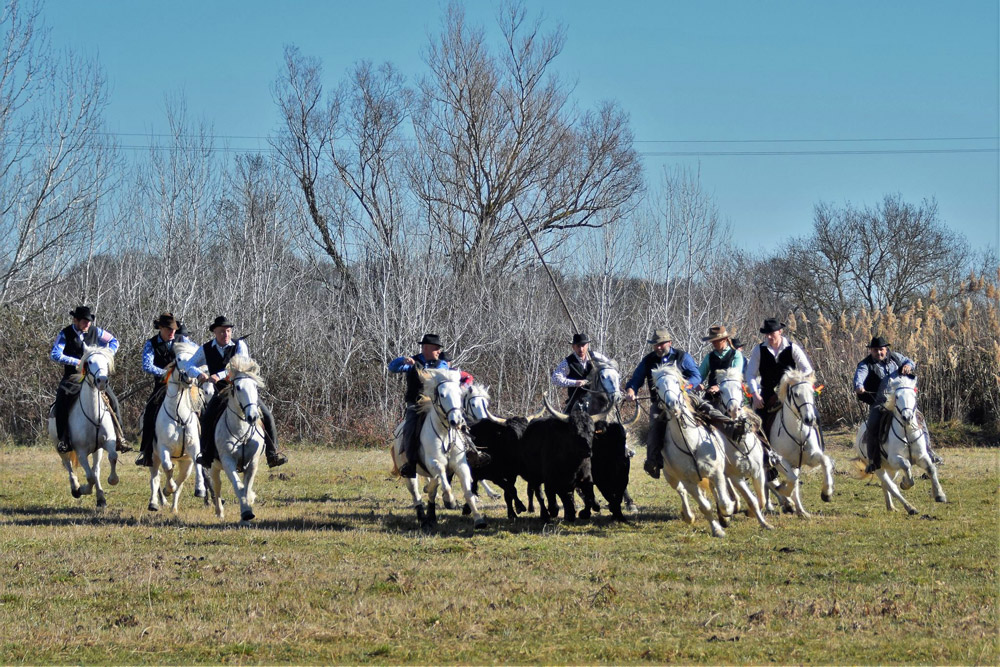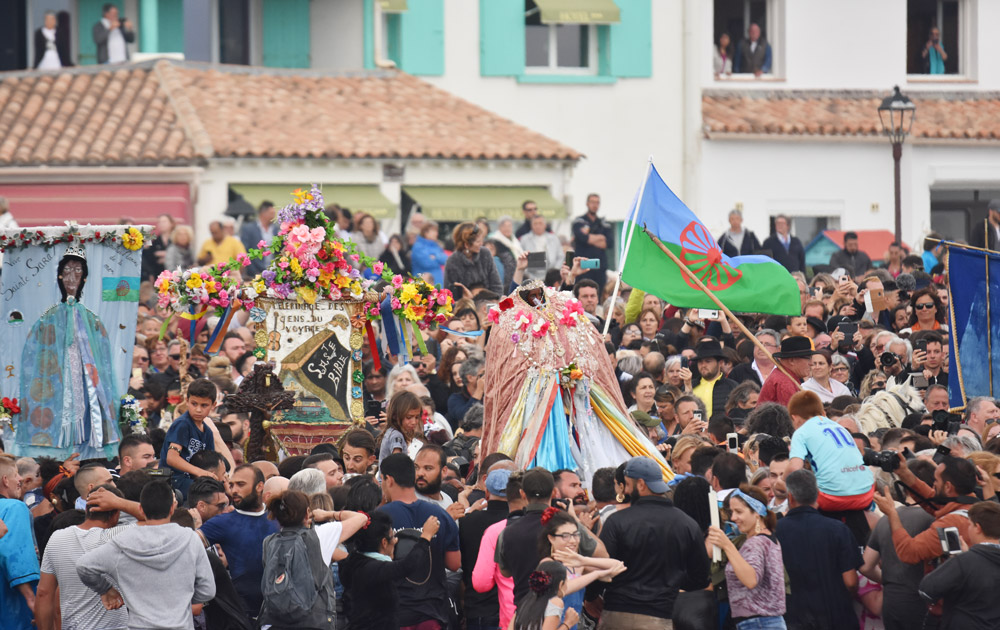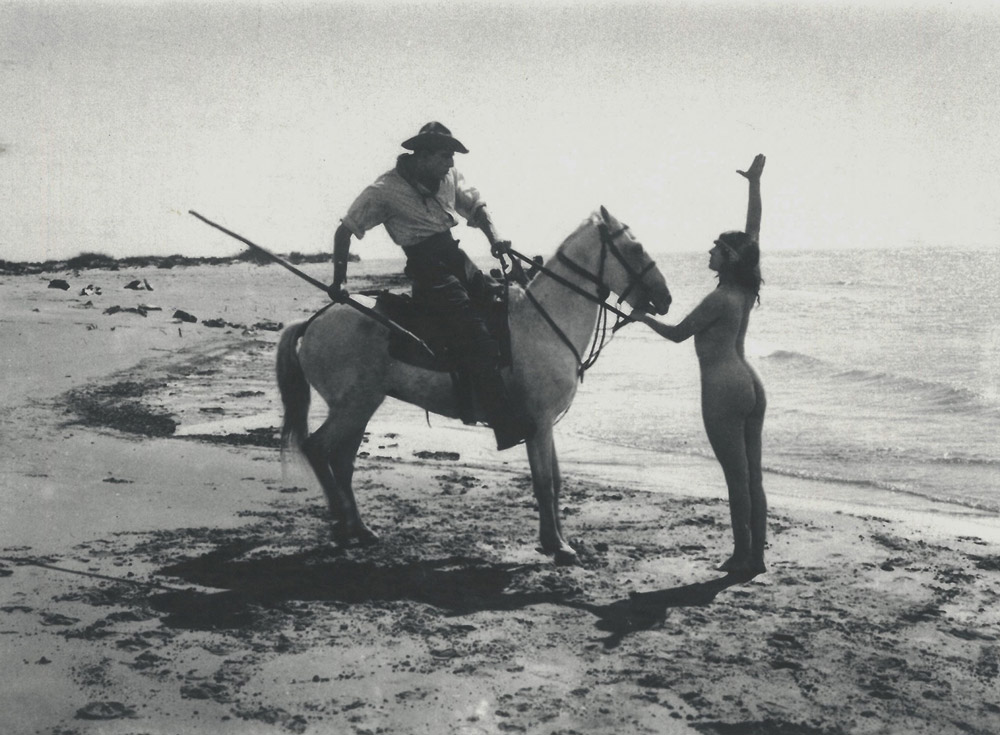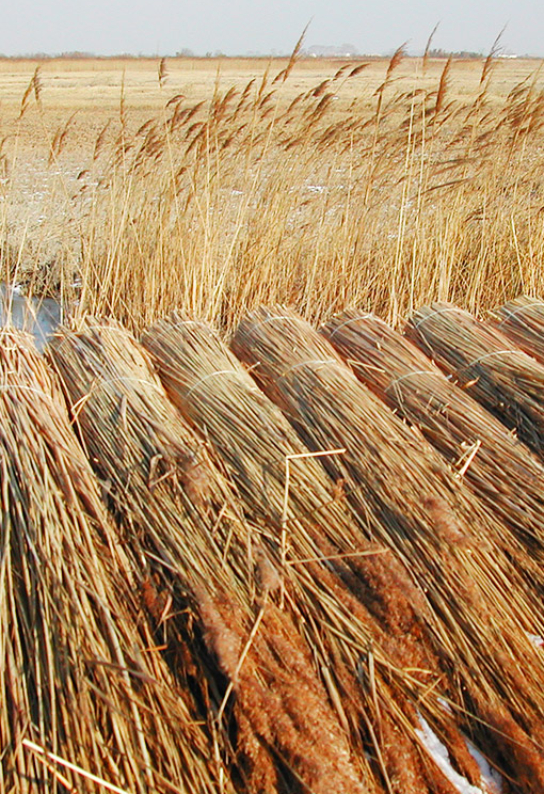A land of history and culture, the Camargue is above all a land shaped by women and men who have preserved this precious and fragile heritage. A cultural heritage that brings the memory of this territory to life.
Gypsy fervor in the Camargue
The Camargue has seen the Gypsies pass since the dawns of time. They arrived in Europe with the title of pilgrims. They participated in the pilgrimage of Saint-Jacques-de-Compostelle from 1432 on and still do. In the small church of Les Saintes-Marie-de-la-Mer and most of the time without a priest, they make their devotions to their patron saint, Sara la Kali. Kali means both gypsy and black. Folco de Baroncelli was touched by the sincerity and power of this fervor. He asked the archbishop of Aix-en-Provence for permission to take Sara’s relics out to sea, which he obtained in 1935. Ever since in May, the gypsies have celebrated this sacred event in broad daylight. The small statue is clad in multi-colored jewels and dresses. Up to fifty superimposed adornments dress Sara la Kali. She is surrounded by a multitude of candles held at arm’s length. She is carried to the sea in a joyful atmosphere, preceded by the gardians on their horses. In the evening, there is a procession following the sounds of violins and guitars for the vigil prayer. The atmosphere is fervent and crowded as pilgrims and tourists flood in from everywhere to witness an unforgettable moment.
Bulls and horses of the Camargue: an ancestral culture
The Camargue culture and its traditions linked to bulls and horses is a unique and special heritage of this territory. Bulls breeding has first been mentioned in Gallo-Roman manuscripts. These traditions have become true folk festivals in the towns and villages in the area. The votive festivals, abrivados and bandidos, encierros and the typical Camargue bull races are always great moments of sharing. A craze that wins every visitor and contributes to the cultural and economic life of the Camargue.

The Buffalo Bill show and the birth of the Camargue movies
On the occasion of the Wild West Show of Buffalo Bill in France in 1906, the poet and manadier Folco de Baroncelli met with Sioux Indians from Dakota and made friends with them. He also met Joël Hamman, a young French man recruited by the show for his knowledge of the Indians, his talents as an actor, rider and stuntman.
These encounters marked the life of the Marquis and opened a new chapter in the history of French cinema. The Camargue is a natural Far-West setting for adventure film directors: cowboys on horseback chasing Indians, a train that whistles far in the distance of an endless vast expanse of land. It is not the great American Wild West, but a perfect look-alike.
Until 1914, around 20 adventure films were shot in the Camargue: Pendaison à Jefferson City, La Prairie est en feu, Cent dollars mort ou vif…
Locally recruited actors dressed up with costumes brought by Joël Hamman from his travels and those offered to Folco de Baroncelli by the Indians: Indian headgears, Stetson hats, sheepskin clotheslines, saddles… At the same period, other directors came to shoot regionally inspired works such as Mireille by Frédéric Mistral, Le Roi de Camargue by Jean Aicard or L’Arlésienne by Alphonse Daudet.
In 1963, the Camargue was the setting for the film “D’où viens-tu, Johnny‘” with Johnny Hallyday.




